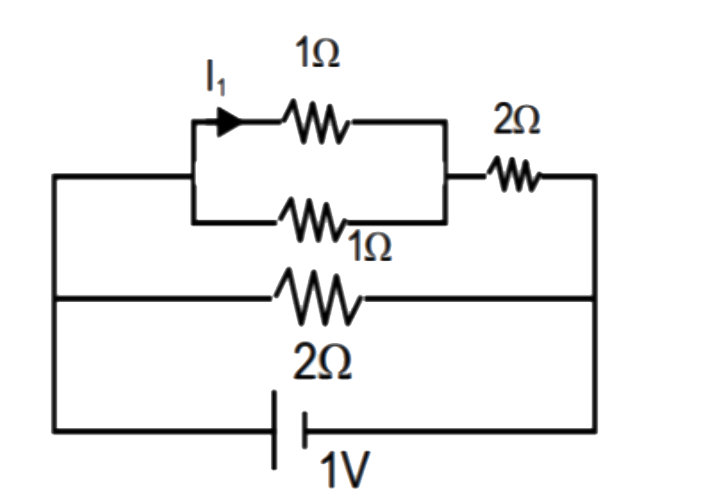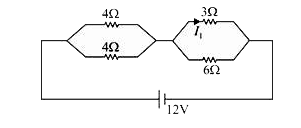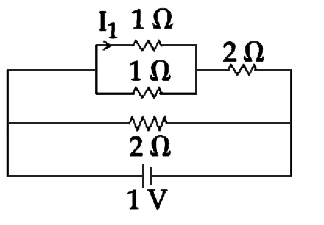The potential difference V across and the current I flowing through an instrument in an AC circuit are given by:
V=5cosωt volt
I=2sinωt Amp.
5 watt
10 watt
2.5 watt
0
The correct Answer is:B
To solve the problem, we need to find the average power in the AC circuit given the potential difference V and the current I.
1. Identify the given equations:
- The potential difference is given by:
V=5cos(ωt) volts
- The current is given by:
I=2sin(ωt) amps
2. Convert the current equation to cosine form:
- We can express the sine function in terms of cosine:
I=2sin(ωt)=2cos(ωt−π2)
- This shows that the current lags the voltage by π2 radians (or 90 degrees).
3. Determine the phase difference:
- The phase difference ϕ between the voltage and the current is:
ϕ=π2
4. Calculate the maximum voltage and current:
- The maximum voltage Vm is 5 volts.
- The maximum current Im is 2 amps.
5. Use the formula for average power in an AC circuit:
- The average power P in an AC circuit is given by:
P=VmImcos(ϕ)
- Substituting the values we have:
P=5×2×cos(π2)
6. Calculate cos(π2):
- We know that:
cos(π2)=0
7. Final calculation of average power:
- Therefore, the average power P becomes:
P=5×2×0=0 watts
Conclusion:
The average power developed in the circuit is 0 watts.
- The potential difference is given by:
V=5cos(ωt) volts
- The current is given by:
I=2sin(ωt) amps
- We can express the sine function in terms of cosine:
I=2sin(ωt)=2cos(ωt−π2)
- This shows that the current lags the voltage by π2 radians (or 90 degrees).
- The phase difference ϕ between the voltage and the current is:
ϕ=π2
- The maximum voltage Vm is 5 volts.
- The maximum current Im is 2 amps.
- The average power P in an AC circuit is given by:
P=VmImcos(ϕ)
- Substituting the values we have:
P=5×2×cos(π2)
- We know that:
cos(π2)=0
- Therefore, the average power P becomes:
P=5×2×0=0 watts
The average power developed in the circuit is 0 watts.
Similar Questions
The potential differences V and the current i flowing through an instrument in an AC circuit of frequency f are given by V=5cosωt and I=2sinωt amperes (where ω=2πf). The power dissipated in the instrument is
View SolutionThe potential difference V across and the current I flowing through an instrument in an AC circuit are given by what will be the avrage power:
V=5cosωt volt
I=2sinωt Amp.
View SolutionThe potential difference E and current I flowing through the ac circuit is given by E=5cos(ωt−π/6)VandI=10sin(ω)tA. Find the average power dissipated in the circuit.
View SolutionCurrent in an ac circuit is given by I=3sinωt+4cosωt, then
View SolutionIn the given circuit current flowing through 2 Omega resistance is
View SolutionThe current I1 (in A) flowing through the 1Ω resistor in the given circuit is

View SolutionThe current I1 (in A) flowing through 3Ω resistor in the following circuit is:

View SolutionVoltage and current in an ac circuit are given by
V=5sin(100πt−π6) and I=4sin(100πt+π6)
View SolutionThe current I1 (in A) flowing through 3Ω resistor in the following circuit is:

View SolutionThe current I1 ( in A ) flowing through 1 Ω resistor in the following circuit is :

View Solution
